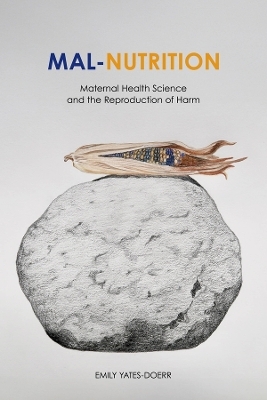
Growing the Taraco Peninsula
Indigenous Agricultural Landscapes
Seiten
2024
University Press of Colorado (Verlag)
978-1-64642-612-6 (ISBN)
University Press of Colorado (Verlag)
978-1-64642-612-6 (ISBN)
- Titel z.Zt. nicht lieferbar
- Versandkostenfrei
- Auch auf Rechnung
- Artikel merken
Growing the Taraco Peninsula is an examination of long-term human-environmental interactions through agriculture among Indigenous communities of the Taraco Peninsula, Bolivia, located on the shores of Lake Titicaca in the Andes.
Growing the Taraco Peninsula is an examination of long-term human-environmental interactions through agriculture among Indigenous communities of the Taraco Peninsula, Bolivia, located on the shores of Lake Titicaca in the Andes. Maria Bruno weaves together ethnographic observations of modern-day Aymara farming practices with an in-depth study of archaeological remains, particularly plants, to examine the development of agricultural landscapes through time.
Beginning with the first small-scale communities of the Formative period (1500 BCE–500 CE) through the development of the Tiwanaku state (500–1100 CE), Bruno draws upon ethnographic insights from modern-day Indigenous farming practices on the peninsula as well as archaeological evidence from excavations at four sites to explore the landscapes and human-plant relationships that Taraco communities created through their agricultural practices. Through evaluation of environmental data on climate and land-use dynamics—rainfall, lake level, and soil character and distribution—she proposes a new hypothesis of how raised-field agriculture may have emerged in the region. With a detailed analysis of foodways at the Kala Uyuni site, her study reveals how Indigenous Taraco communities sustainably incorporated crops and wild plants into their daily and special-occasion meals, connecting the agricultural landscapes to local and regional social and political dynamics.
Bringing together several indicators of the region’s long-term history and demonstrating that shifts in agriculture do not neatly correspond to the changes traditionally highlighted by archaeological culture histories, Growing the Taraco Peninsula reveals Indigenous landscape creation through farming on the Taraco peninsula as a critical example of sustainability. This valuable contribution to Andean archaeology is also of interest to scholars, students, and the general reader concerned about the environment, sustainable farming, sustainability, Andean history, and the Indigenous peoples of the Americas.
Growing the Taraco Peninsula is an examination of long-term human-environmental interactions through agriculture among Indigenous communities of the Taraco Peninsula, Bolivia, located on the shores of Lake Titicaca in the Andes. Maria Bruno weaves together ethnographic observations of modern-day Aymara farming practices with an in-depth study of archaeological remains, particularly plants, to examine the development of agricultural landscapes through time.
Beginning with the first small-scale communities of the Formative period (1500 BCE–500 CE) through the development of the Tiwanaku state (500–1100 CE), Bruno draws upon ethnographic insights from modern-day Indigenous farming practices on the peninsula as well as archaeological evidence from excavations at four sites to explore the landscapes and human-plant relationships that Taraco communities created through their agricultural practices. Through evaluation of environmental data on climate and land-use dynamics—rainfall, lake level, and soil character and distribution—she proposes a new hypothesis of how raised-field agriculture may have emerged in the region. With a detailed analysis of foodways at the Kala Uyuni site, her study reveals how Indigenous Taraco communities sustainably incorporated crops and wild plants into their daily and special-occasion meals, connecting the agricultural landscapes to local and regional social and political dynamics.
Bringing together several indicators of the region’s long-term history and demonstrating that shifts in agriculture do not neatly correspond to the changes traditionally highlighted by archaeological culture histories, Growing the Taraco Peninsula reveals Indigenous landscape creation through farming on the Taraco peninsula as a critical example of sustainability. This valuable contribution to Andean archaeology is also of interest to scholars, students, and the general reader concerned about the environment, sustainable farming, sustainability, Andean history, and the Indigenous peoples of the Americas.
Maria C. Bruno is an anthropologist and co-director of the Taraco Archaeological Project and has been conducting research on the development of farming in the Lake Titicaca Basin of Bolivia since the early 2000s. Her work has contributed to a greater understanding of the domestication of the Andean chenopods, quinoa, and kañawa; Indigenous small-holder intensification strategies; and the trajectories of early social-political developments in the region.
| Erscheinungsdatum | 28.08.2024 |
|---|---|
| Zusatzinfo | 31 |
| Verlagsort | Colorado |
| Sprache | englisch |
| Maße | 152 x 229 mm |
| Themenwelt | Geisteswissenschaften ► Archäologie |
| Sozialwissenschaften ► Ethnologie | |
| Sozialwissenschaften ► Soziologie | |
| Weitere Fachgebiete ► Land- / Forstwirtschaft / Fischerei | |
| ISBN-10 | 1-64642-612-6 / 1646426126 |
| ISBN-13 | 978-1-64642-612-6 / 9781646426126 |
| Zustand | Neuware |
| Informationen gemäß Produktsicherheitsverordnung (GPSR) | |
| Haben Sie eine Frage zum Produkt? |
Mehr entdecken
aus dem Bereich
aus dem Bereich
maternal health science and the reproduction of harm
Buch | Softcover (2024)
University of California Press (Verlag)
CHF 52,35
Holocaust heritage, noncitizen futures, and black power in Berlin
Buch | Softcover (2022)
University of California Press (Verlag)
CHF 52,35


